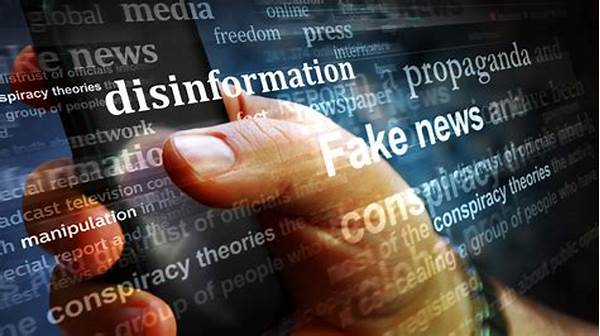In the contemporary digital age, armed conflicts are not only fought on the battlefield but also in the information sphere. One of the critical challenges arising from this dual-front warfare is the proliferation of misinformation. The term “misinformation spread during armed conflicts” refers to the deliberate or inadvertent dissemination of false or misleading information that can influence public perception and decision-making. The ramifications of such distortions are profound, affecting everything from the morale of the populace to the strategies employed by military forces.
The Impact of Misinformation on Public Perception
Misinformation spread during armed conflicts can significantly shape public perception. In an environment where information is a strategic asset, conflicting parties may utilize false narratives to sway public opinion in their favor or against their adversaries. This manipulation can lead to polarization among civilian populations, undermining social cohesion and fostering an environment of distrust. Additionally, misinformation can obscure the truth, hindering the ability of the international community to respond effectively to humanitarian crises. The complexity of modern media ecosystems further exacerbates this issue, as individuals are often unable to discern credible sources from misleading ones. This dynamic creates a fertile ground for misinformation to thrive, fundamentally altering how conflicts are perceived and managed by governments and organizations worldwide. The consequences can be long-lasting, affecting diplomatic relations and post-conflict reconstruction efforts.
Methods of Misinformation Dissemination
Misinformation spread during armed conflicts can occur through various methods, including social media platforms, traditional news outlets, and word of mouth. Social media, due to its rapid dissemination capabilities, often acts as a conduit for false information. Additionally, propaganda is a tool frequently employed by warring factions to achieve strategic advantages. In some cases, deepfake technology is used to create convincing but entirely fabricated visual or audio content. Anonymous accounts and bots further amplify the spread of misinformation, making it challenging to control its reach and impact. Lastly, misinformation can also be spread through seemingly reliable news organizations that have been compromised or co-opted by conflicting parties.
Historical Examples of Misinformation in Conflicts
Throughout history, misinformation spread during armed conflicts has been a persistent strategy used by parties involved in hostilities. During World War II, for instance, both Axis and Allied powers engaged in the dissemination of propagandistic content to boost their war efforts. Similarly, during the Gulf War, misinformation was used to manipulate perceptions and justify military actions. More recently, during the Syrian conflict, various entities have spread false narratives, complicating the international community’s efforts to address the crisis effectively. These examples underscore the enduring relevance and impact of misinformation in shaping the course of armed conflicts, influencing both the perception and outcomes of warfare.
The Challenges of Counteracting Misinformation
Counteracting the misinformation spread during armed conflicts presents several challenges. Firstly, the sheer volume and rapid spread of information make it practically impossible to fact-check and verify all content in real time. Secondly, suspicions toward authoritative sources, amplified by misinformation itself, lead to public skepticism and resistance to correction. Thirdly, there is a risk of infringing on freedom of speech and the press when attempting to regulate or limit the dissemination of false information. Additionally, technological advancements continually provide new tools for creating and spreading misinformation, staying one step ahead of mechanisms designed to counter them. Lastly, the global nature of digital communication networks complicates the jurisdiction and enforcement of any measures taken.
International Efforts to Combat Misinformation
International organizations, governments, and NGOs have acknowledged the critical nature of addressing misinformation spread during armed conflicts. Initiatives are being undertaken to improve digital literacy, enabling individuals to better assess the credibility of the information they consume. Collaborative fact-checking networks have been established to debunk myths and false narratives in real-time. Furthermore, platforms hosting user-generated content are increasingly urged to monitor and manage misinformation actively. Legal frameworks are also being considered to hold entities accountable for the deliberate spread of false information. Despite these efforts, the rapidly evolving digital landscape continues to challenge the adequacy of these measures.
The Role of Technology in Addressing Misinformation
Technological advancements offer both solutions and challenges in combating misinformation spread during armed conflicts. On one hand, artificial intelligence and machine learning algorithms can aid in detecting and filtering false content more efficiently. On the other hand, these same technologies can be manipulated to generate increasingly sophisticated misinformation. As technology continues to advance, developing robust ethical guidelines and governance structures will be crucial in ensuring that tech solutions are used responsibly. Collaboration among stakeholders—technology companies, governments, and civil society—is essential to create an environment where technology aids rather than hinders the fight against misinformation in conflict zones.
Conclusion
In conclusion, misinformation spread during armed conflicts represents a significant threat to global security, stability, and peace. The historical and contemporary examples illustrate its potent ability to alter conflict dynamics fundamentally. Efforts are being made to mitigate this challenge, though success requires concerted, collaborative actions spanning international boundaries and various sectors. As conflicts increasingly play out in the digital realm, understanding and addressing the role of misinformation becomes ever more critical. Only through coordinated and sustained engagement can the international community hope to minimize the detrimental impacts of misinformation and foster informed decision-making processes during conflicts.





